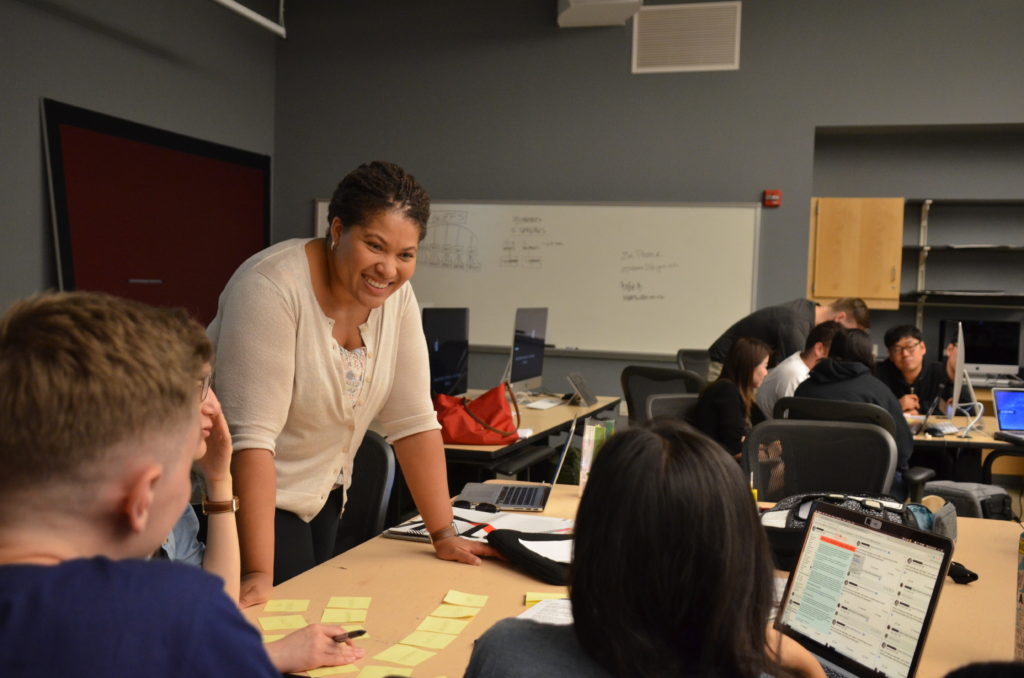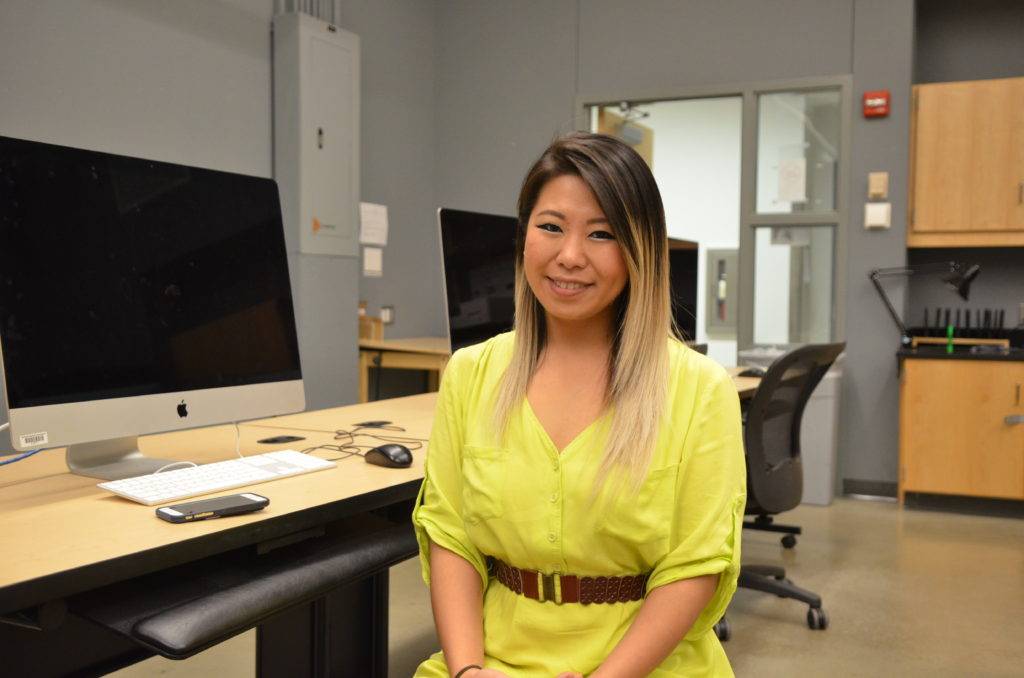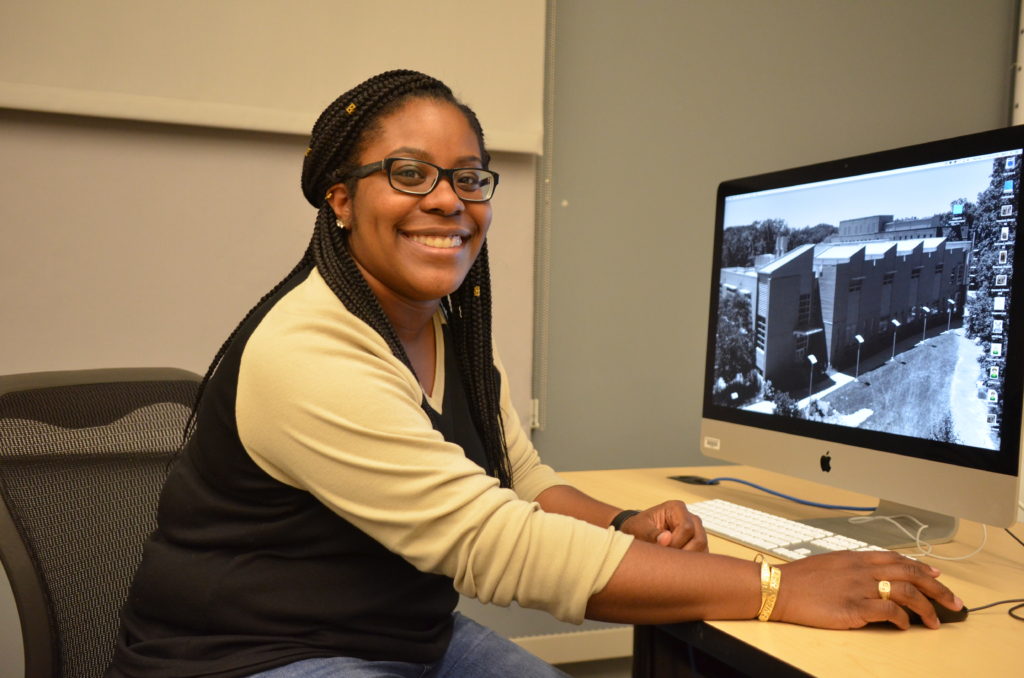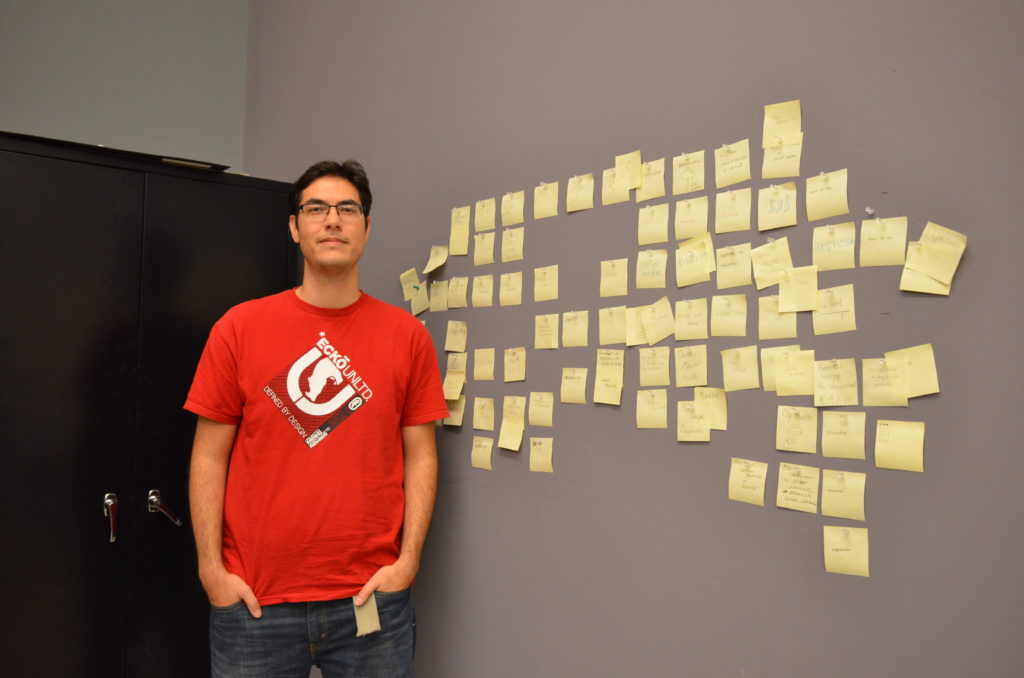Fairfax, Va. – The clock strikes 1 a.m. Reece Quinones is still editing a video for work. She came home from work at 11pm. The deadline: 5 p.m. on Sept. 19. She sacrifices her sleep to return to work early to meet her deadline and have enough time to go to class. This lifestyle is common for many adjunct professors.
Books in hand and a bright smile, she attentively greets each student outside the classroom at 7:30 p.m. Little would you know Quinones barely slept to meet a major work deadline. After work, she braced the rush hour traffic from Maryland to Virginia to teach User Experience Design. The two-hour commute didn’t faze her.
“It actually brings me so much joy to teach even after a hard day like today,” said Quinones. “Teaching is my first love.”
When you love what you do
Quinones is an adjunct professor at George Mason University, a Senior Vice President and Creative Director at Hatcher Group, master’s candidate, and mom.
Like many other adjunct professors, Quinones is juggling a full-time job while teaching. In spite of the low salary adjunct professors receive, jam-packed workload, and no health care benefits, she continues to work.
Adjunct professors teach on a limited-term contract and are ineligible for tenure.
“If I could just teach, if the world would pay teachers what I think they could survive on, I would definitely teach full-time,” says Quinones.
As universities increase their reliance on adjunct professors, the low wage adjunct professors receive, impacts students, adjunct professors, and educational institutions.
Adjunct positions account for over 70 percent of all instructional staff appointments in higher education in America, according to American Association of University Professors. “This growth in the use of part-time faculty has occurred despite low pay, almost nonexistent benefits, inadequate working conditions, and little or no opportunity for career advancement.
Reece has been an adjunct professor for over 10 years. “If I could just teach, if the world would pay teachers what I think they could survive on, I would definitely teach full-time,” says Quinones.
Universities can’t hold onto adjunct professors due to low salary, their demanding daytime jobs, or the workload teaching requires, says Quinones.
Everything about her is warm, including her silver cardigan and favorite flowery shirt. Why is it her favorite shirt? She is comfortable with the slightly muted colors with grays and peaches. Like her, it is understated. It is not too bright and gives her enough color, without making her stand in the forefront.
She is ready to listen and challenge all 24 students.
Quinones walks around her classroom in between groups of students. They surround a galore of 20 silver 21.5-inch MAC monitors.
“What do you suggest?” Quinones asks how they would improve Amazon’s website user experience.

The classroom tube lights, gray walls, and colorful Post-it, is an incubator for ideas. Students exchange their opinions and write their findings. No one notices the slight buzzing sound the tube lights makes in the background. Chatter and excitement fill the space.
There is no other greater feeling then seeing a kid understand a concept that you are teaching, Quinones says.
I wish the world in general; especially the United States would really respect what teachers’ offer their kids, says Quinones.
Quinones spends between 10 to 15 hours a week on lesson planning. For a new class, she spends 60 hours before the semester despite knowing her class may get cancelled due to an array of reasons.
She is inspired by John Cotton Dana words, “Who dares to teach must never cease to learn.”
Many adjunct professors cannot make a living wage through teaching. A full course load consists of three courses a semester, totaling an income of $30,000 a year.
Yoomi Song, 29, is a Graphic Designer at the design firm, Street Sense, and volunteers after work as a teacher’s assistant for Quinones.

“She is like a happy virus,” says Song. “She is very approachable and a personable professor.”
Quinones taught Song during her undergraduate studies. Song graduated from George Mason University in 2008 and received a Bachelors of Fine Arts.
Since adjunct professors have extensive work experience, they were very helpful providing interviewing advice, says Song. After two weeks of graduating, Song got a job.
Christina Childs is a master’s candidate at George Mason and is taking her second course with Quinones. “She is definitively the true definition of what a true teacher is,” says Childs.

Quinones helped her redesign her resume. She is wiling to help in any way, says Childs. “I definitely think the pay is ridiculous, when they provide the same and or better than what tenured professors provide.”
Quinones has also been a mentor for her student and former coworker, Thomas Lytle.

Quinones taught Thomas Lytle his first design class in 2009, during his undergraduate studies at George Mason University.
Quinones would stay after class for more than an hour to help Lytle and other students.
Quinones helped land his first job by encouraging him to apply for an internship at her former employer, where she mentored him for 6 years. Now Lytle is an Associate Art Director.
Due to Quinones’s encouragement, Lytle is pursuing a Master’s in Fine Arts and is teaching, following in Quinones footsteps.
“I can definitely say I would not be who I am or where I am, if I didn’t meet her,” says Lytle.